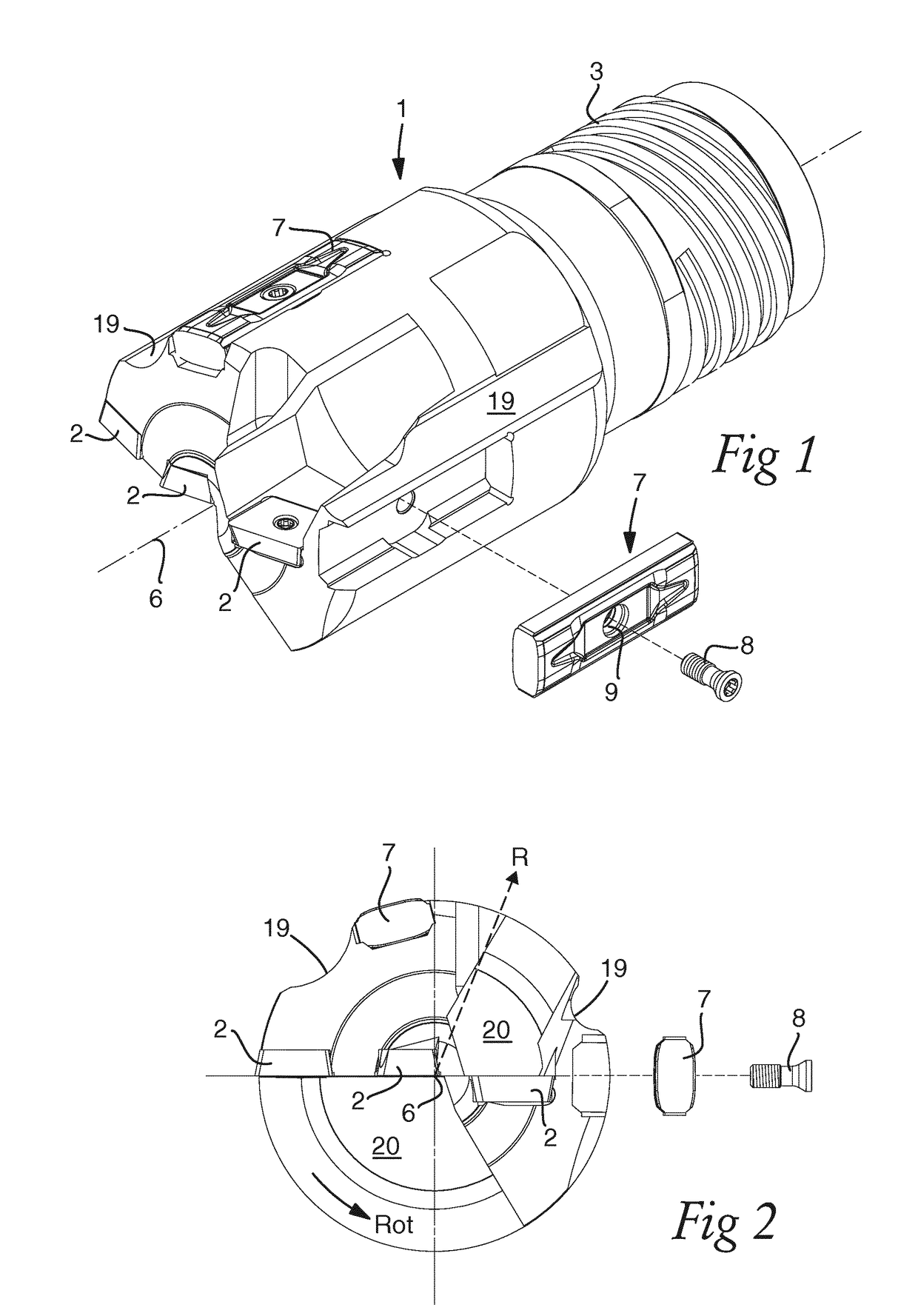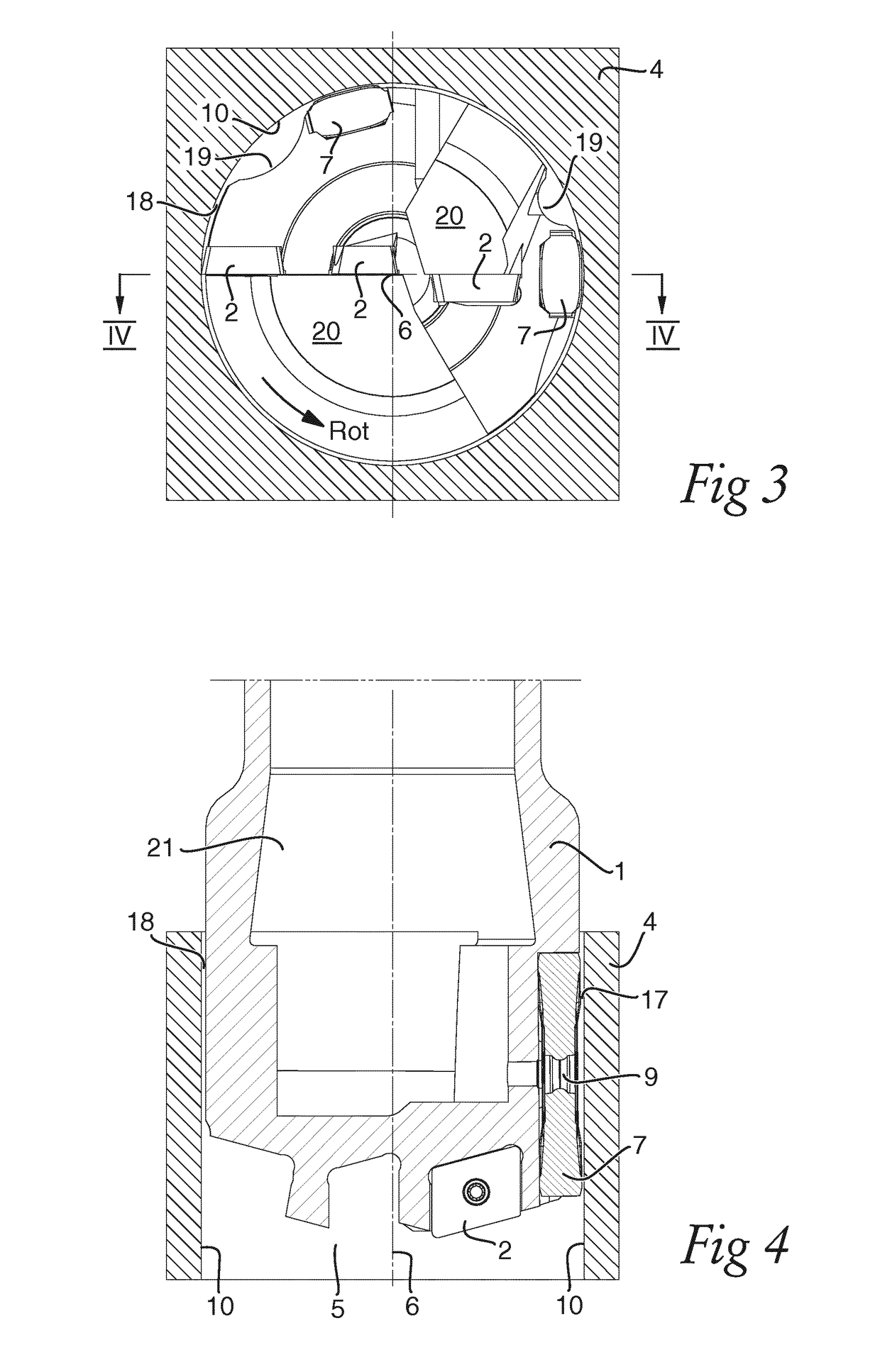Guide pad and cutter head for a cutting tool
a cutting tool and cutter head technology, applied in the field of cutting tools, can solve the problems of guide pads subjected to wear and cracks, insufficient cooling/lubrication, and considerable wear and tear of guide pads, and achieve the effect of advantageously low weakening of guide pads
- Summary
- Abstract
- Description
- Claims
- Application Information
AI Technical Summary
Benefits of technology
Problems solved by technology
Method used
Image
Examples
Embodiment Construction
[0030]Reference is first made to FIGS. 1 and 2, which illustrate a cutting tool in form of a cutter head 1 for a drilling tool in a perspective view and a front view, respectively. The cutter head is in a front end provided with cutting inserts 2 and in a rear end with an external thread 3. The cutter head is by means of the external thread adapted to be attached to a not shown drill tube, which can be carried by a suitable supporting device.
[0031]As is best seen from FIGS. 2 and 3, of which the latter shows a cross section through a work piece 4 and the front end of the cutter head during drilling a hole 5 in the work piece, the cutter head comprises three cutting inserts 2, which are positioned such that their respective cutting edges are positioned along an essentially straight line perpendicular to a rotational axis 6 of the cutter head 1, with two cutting inserts positioned on mainly one side of the rotational axis and one on the other side facing in the opposite direction. Dur...
PUM
 Login to View More
Login to View More Abstract
Description
Claims
Application Information
 Login to View More
Login to View More - R&D
- Intellectual Property
- Life Sciences
- Materials
- Tech Scout
- Unparalleled Data Quality
- Higher Quality Content
- 60% Fewer Hallucinations
Browse by: Latest US Patents, China's latest patents, Technical Efficacy Thesaurus, Application Domain, Technology Topic, Popular Technical Reports.
© 2025 PatSnap. All rights reserved.Legal|Privacy policy|Modern Slavery Act Transparency Statement|Sitemap|About US| Contact US: help@patsnap.com



